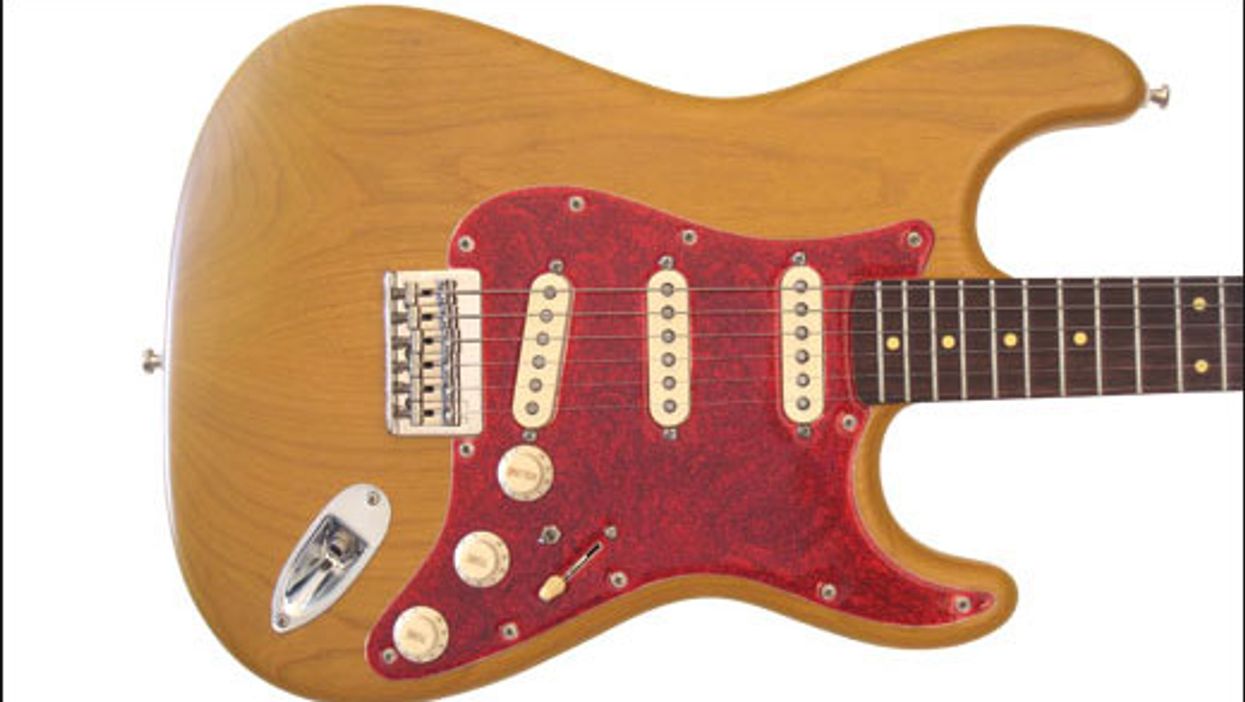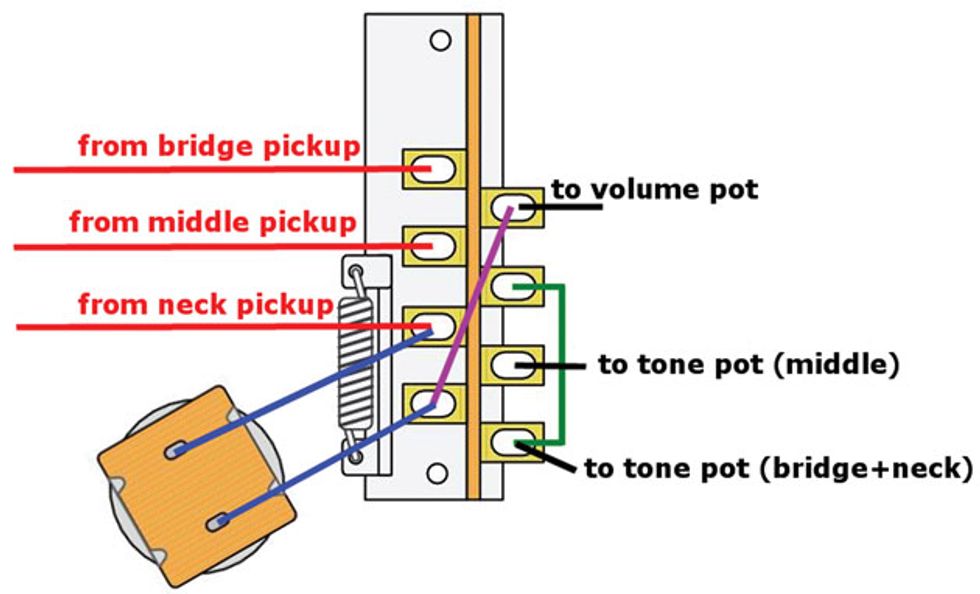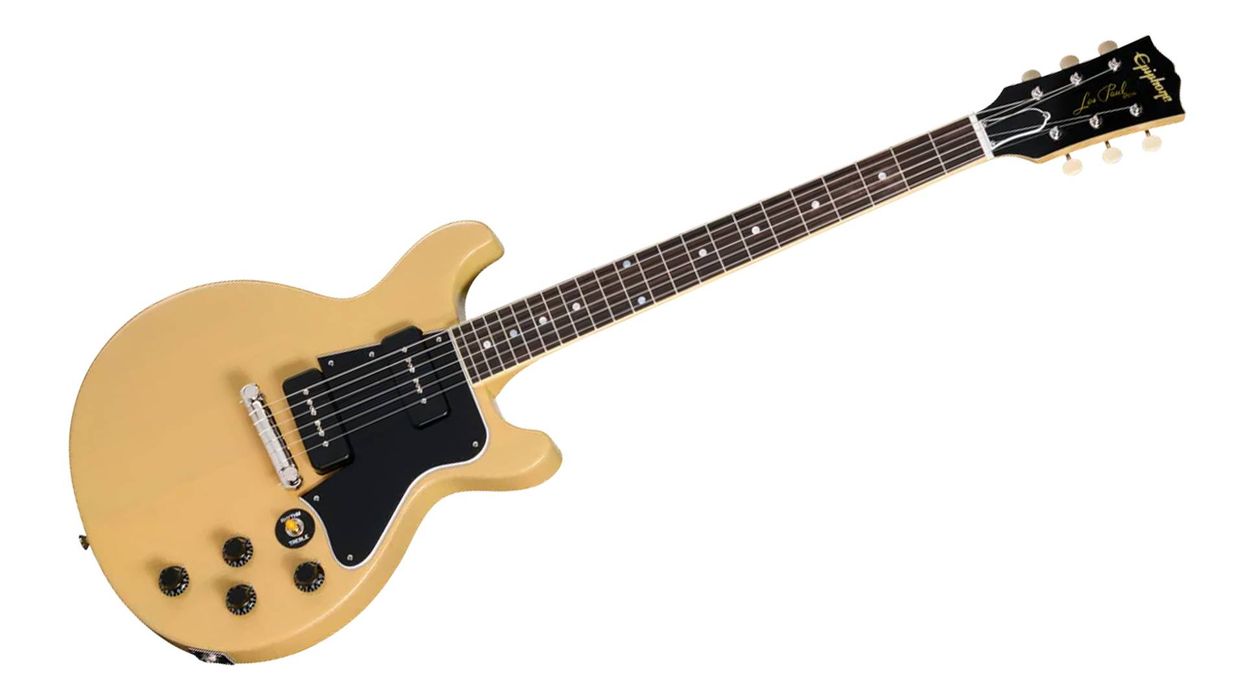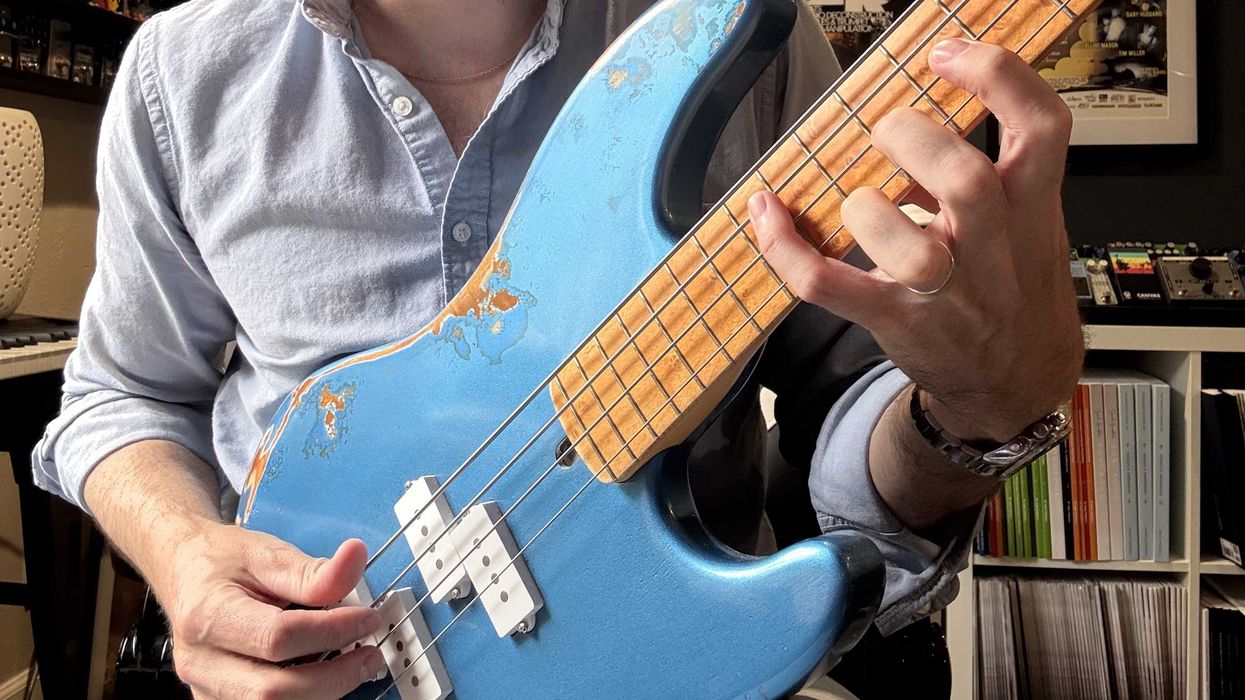Players who don't want to change guitars onstage often ask us if we can cross a Stratocaster with a Telecaster. After exploring this Strat-Tele concept for many years in our shop, we came up with a custom model called the Riptide (Photo 1). The ideal “crossover" guitar combines both electrical and physical attributes, and I'll describe both in case you want to build your own Riptide-inspired guitar. That said, simply implementing Riptide wiring into your own standard Strat will bring you closer to a crossover guitar than anything you may have tried before.
Before I describe how to do this, let's summarize what most players seek from merging these two worlds. They want the comfort and playability of a Strat with its deeply contoured body, neck profile, and balance, as well as its parallel-wired, bridge-plus-middle and middle-plus-neck pickup combinations. For the Tele, the appeal lies in the twangy, snappy sound of its bridge pickup, a dedicated bridge tone control, the “boxy" tone of the neck pickup, and the guitar's distinctive bridge-plus-neck pickup combination (again, wired in parallel).
Physical construction. Our basic platform is a Stratocaster body plus a maple neck with a soft V-profile and rosewood fretboard. For the body, we use extremely lightweight swamp ash, which was what Fender typically used for early Telecasters. (There are vintage swamp ash Strats, but Teles were more common.) For a classic Tele look, we finish the body in butterscotch blonde. String-through-body construction plays an important role in Tele tone, so we skip the tremolo, opting instead for a hardtail Strat bridge with 6 individual saddles. On a Tele, the bridge pickup mounts directly into the metal bridge—another key ingredient in classic Tele tone—so we use a metal Strat pickguard to place some steel around the pickups. We powder coat our pickguards, but alternatively you can paint them.
Electrical layout. The main goal is to cram as much Telecaster vibe into the Strat wiring as possible without overwhelming those signature Strat tones. Balancing the pickups is tricky: You want a bold Tele bridge tone, yet also the clucky bridge-plus-middle Strat sound. And you want the boxy character of the Tele neck pickup, yet it should look like a Strat pickup and have some of its sonic glory.
To allow the bridge and neck pickup to work together in parallel à la Tele, we connect an on-off (SPST) switch to the neck pickup. This is nothing new—it's the good ol' Stratocaster “7-Sound" mod. (The subject of our September 2008 column.) We altered the layout of the two tone controls so one knob works with the bridge and neck pickups (as on a Tele), while the second one controls the middle pickup.
The bridge pickup is constructed like a Telecaster bridge pickup, yet it's shaped like a Strat pickup so it fits the latter's pickup covers and pickguard. It has the typical Tele metal baseplate and is custom wound to emulate an early '50s Tele bridge pickup. We offer all the Riptide pickups individually or as a set for a decent price, but a viable alternative is the Seymour Duncan Twang Banger Strat APST-1. Simply adjust it a tad lower than usual for a good Strat tone when paired with the middle pickup.
The Riptide middle pickup has the same winding direction as the bridge pickup—it's not a reverse-wound, reverse polarity (RWRP) model designed to cancel hum when combined with the bridge or neck pickup. We did this to emulate the beautifully open, defined tone of vintage Strats. Because the middle pickup has to compensate for what the bridge pickup lacks in Strat character, we had to tweak its construction to create classic bridge-plus-middle Strat tones. As an alternative, I recommend a Fender Custom Shop '54 Strat or Fender Texas Special middle pickup, but the latter is RWRP, so be careful not to end up with an out-of-phase ensemble.
Fig. 1 — Wiring diagram courtesy of singlecoil.com
The neck pickup has a Strat shape, so it too fits a Strat pickup cover and pickguard. It sounds like a typical Tele neck pickup when combined with the bridge pickup in parallel, but like a Strat neck pickup when played solo with the tone control wide open. Depending on the tone cap you use, the neck Tele tone emerges when you roll the tone knob back about 30 percent. We've never found a pickup like this on the market, but there are metal covers (open and closed) available for Strat pickups, and if you put one on your existing Strat neck pickup, this will get you into the tonal ballpark. For extra shielding, you can run a wire from the metal cover to ground, just like on a real Telecaster neck pickup.
We use an open-frame 5-way switch, three 250k audio pots with a vintage 60:40 ratio, NOS 0.05 µF ceramic disc caps from the early '60s, and cloth-covered wire. The Riptide wiring diagram (Fig. 1) shows all the other changes compared to a standard Strat wiring. That's it!
Next month we'll try to stuff as much Stratocaster goodness as possible into a Telecaster. Until then ... keep on modding!


















